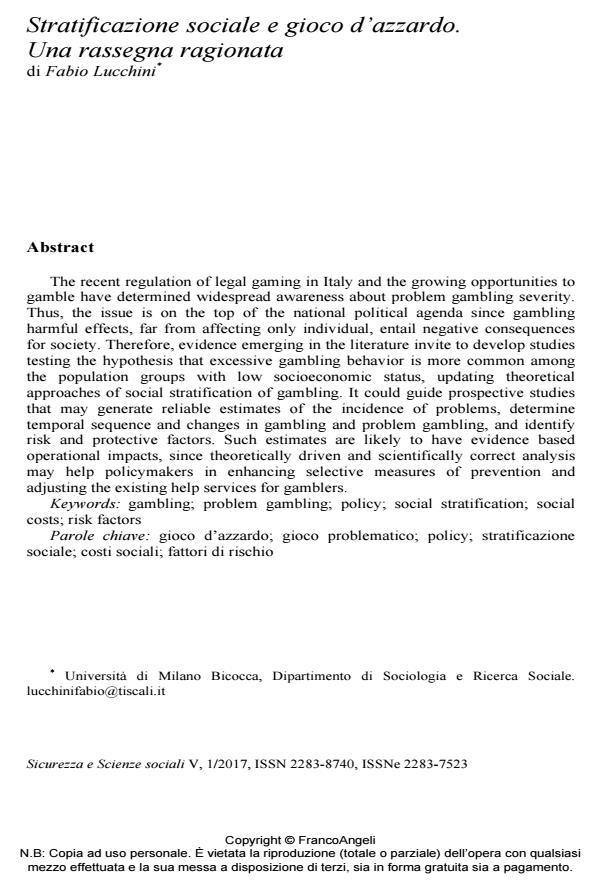Stratificazione sociale e gioco d’azzardo. Una rassegna ragionata
Titolo Rivista SICUREZZA E SCIENZE SOCIALI
Autori/Curatori Fabio Lucchini
Anno di pubblicazione 2017 Fascicolo 2017/1
Lingua Italiano Numero pagine 14 P. 145-158 Dimensione file 128 KB
DOI 10.3280/SISS2017-001014
Il DOI è il codice a barre della proprietà intellettuale: per saperne di più
clicca qui
Qui sotto puoi vedere in anteprima la prima pagina di questo articolo.
Se questo articolo ti interessa, lo puoi acquistare (e scaricare in formato pdf) seguendo le facili indicazioni per acquistare il download credit. Acquista Download Credits per scaricare questo Articolo in formato PDF

FrancoAngeli è membro della Publishers International Linking Association, Inc (PILA)associazione indipendente e non profit per facilitare (attraverso i servizi tecnologici implementati da CrossRef.org) l’accesso degli studiosi ai contenuti digitali nelle pubblicazioni professionali e scientifiche
The recent regulation of legal gaming in Italy and the growing opportunities to gamble have determined widespread awareness about problem gambling severity. Thus, the issue is on the top of the national political agenda since gambling harmful effects, far from affecting only individual, entail negative consequences for society. Therefore, evidence emerging in the literature invite to develop studies testing the hypothesis that excessive gambling behavior is more common among the population groups with low socioeconomic status, updating theoretical approaches of social stratification of gambling. It could guide prospective studies that may generate reliable estimates of the incidence of problems, determine temporal sequence and changes in gambling and problem gambling, and identify risk and protective factors. Such estimates are likely to have evidence based operational impacts, since theoretically driven and scientifically correct analysis may help policymakers in enhancing selective measures of prevention and adjusting the existing help services for gamblers.
Parole chiave:Gioco d’azzardo; gioco problematico; policy; stratificazione sociale; costi sociali; fattori di rischio
Fabio Lucchini, Stratificazione sociale e gioco d’azzardo. Una rassegna ragionata in "SICUREZZA E SCIENZE SOCIALI" 1/2017, pp 145-158, DOI: 10.3280/SISS2017-001014